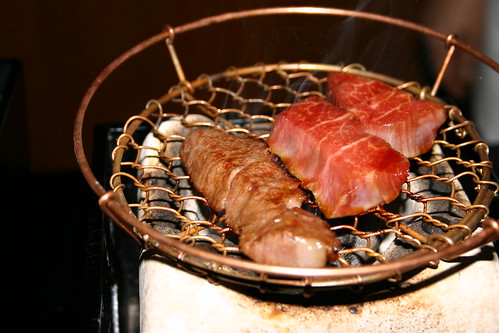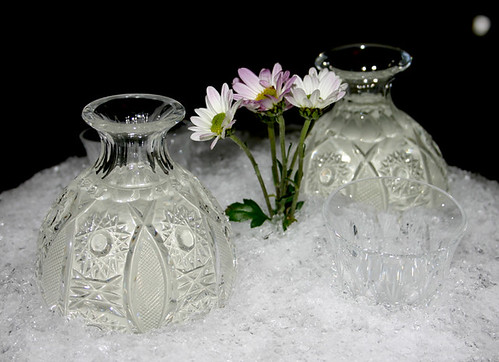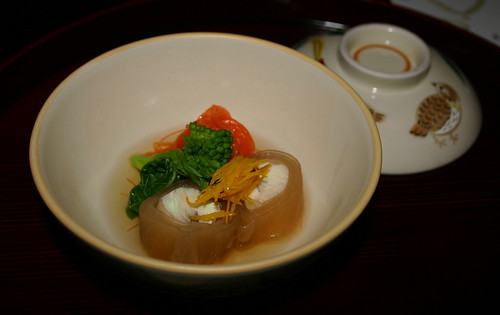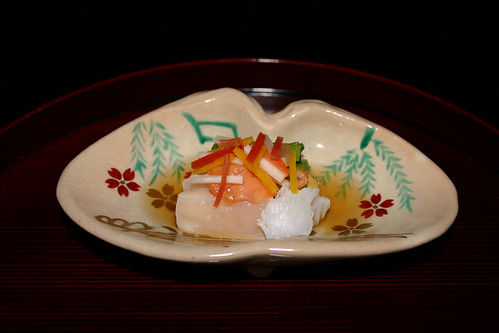Hi. This is Alice’s sister. Yep, the boring one that has a non-high profile desk job. But you know what? I live in New York City. The Epicurean Debauchery town of sorts.
I’m taking over for a bit. I’m going to be writing stuff to keep this little blog from dying.
While my sister's style of writing is more eloquent with focus on how the food actually feels in her mouth, how aromas work through her memories, and the visualization of the effects it has on her, my style of writing is more blunt. Simple. Well…ok, I’ll give you poorly written.
So if you can bare with my writings as more of a pseudo-interesting TV commercial with target-marketing, played in between your favorite food show, perhaps it may be of some entertainment - while you wait for the real thing to come back.
First off, is a topic that has been bothering me for a while now:
Food Branding.
Living in New York these days, I see all sorts of Japanese Restaurant and Neo-Japanese Restaurants going up. Buddakan, Masa, Morimoto, Megu, Nobu57, Matsuri, just to name a few.
What really got me was this:
A lot of these places goes through great means to get everything from the right Binchotan (a type of Japanese coal) to the freshest catch from the Tsukiji Market. Then the master chefs at these location do their thing, and voila, a dinner at these places can leave you $1,000 less than when you started.
No doubt, it's good food. But…between you and me, I can spend $800 on a cheap ticket back to Japan, and have better meals. Cheaper. And more of it.
At one of these newer Japanese restaurants, I overheard one of the "foodies" admiring the Maguro excitedly exclaimed, "This says it was flown in from Tokyo! It's Kinkai Toro!!" Well…In Japan, we like the Kinkai Maguro (Near-Sea Tuna) because it means it was fished in the waters around Japan, and it wasn't frozen - it was fished that night, sold in the morning, on the plate the same evening - it's a rare item, and hence pricier than Tuna that was caught in the Indian Sea and flash frozen. But this is New York. If it really came from Tokyo and wasn't frozen… I'd be kinda scared to eat it.
At Megu, the cheerful waiter gave me a little book. Megu’s Menu is 13 pages long, complete with a list of ingredients.
New York Magazine wrote about it too: [the Menu] “Trumpeting more than 100 dishes characterized with such florid descriptions as “exquisitely composed masterpieces of rare extravagance,” plus a
63-item glossary and a map pinpointing locations for the best ingredients in Japan”
A dinner at Megu will probably set you back as equally as Masa. Three cubes of Kobe Style Beef Sate grilled over Binchotan Coal, placed on hot river rock, wrapped in authentic Japanese washi paper, will set you back by like $28. Add the $13 Edamame still stuck on the vines, some sake and more of the Kobe Style stuff, and there you go. Very easy to blow a small fortune.
True, it takes a lot of effort (and middlemen) to get the authentic ingredients from Japan to New York. To top it all off, unlike your authentic Huitlacoche, the stuff in Japan is already rather pricey to begin with. So perhaps by stating the origins, it makes it easier for the diner to swallow the price and the $10 cube of beef.
Ahhh but while you're enjoying it's soft velvety texture, as you enjoy the beefy juices exploding in your mouth (do I sound like Alice now?) it’s not real Kobe beef. The United States prohibits the importation of beef from Japan due to the Mad Cow fiasco. So for a few years, US restaurants have been calling pampered US cousins of Kobe Beef, as Kobe Beef. However, a recent beef industry & FDA led crack downs have strictly restricted establishments from calling their pampered cousins “Kobe Beef”. Now the semi-official word to describe them is “Kobe STYLE Beef”.
Interesting, isn’t it. They still want to put in “Kobe”. To what? Authenticate? To get some justification, a legitimate claim to “soft fatty beef”? Why aren’t these lovely American cows being marketed as something like “Midwest Velvet” or “Royal Midwest Beef”? Why Kobe? Because Kobe Beef would’ve justified the $10 cube, but Midwest cannot?
I am not sure if there are any other cuisines that are out there that is this hung up on legitimizing the origins of its ingredients. I’ve been to the “old school” French “institutions” in New York. From Ducasse to Lespinasse (closed now). None of them comes with an item glossary and a map, nor do they boast that their Filet of Dover Sole came from Dover Sea, carefully fished by small village fisher, Jean-Pierre and it had arrived this morning (maybe it did, but they never say).
I see little hints of the in places like Per Se and Craft. They like to put in the names of the upstate New York farmers. But only very recently - as if to mimic the Japanese restaurants.
Why this effort? Why are these places doing this? To better educate the dining public? To make an elitist out of the dining public? (I can hear it already, “O dear, you mean your coal isn’t Binchotan?!”) To legitimatize the $13 edamame?
While I do agree fresher and well taken care of ingredients do result in higher quality of the food, I am not sure branding of food as if they were some posh designer dress is a good idea. You ever wonder why a cotton Versace T-shirt is $80 and a cotton Gap T-shirt is $19.99? Sure, the Versace T-shirt maaaaaay have higher thread count but does it really legitimize the $80? Short of tailor made, hell no.
Humph! This is why I don't like to eat Japanese food outside of Japan. I can go to a Yakitori joint underneath the tracks in Shinbashi and have a fantastic non-designer Yakitori and a good cold Sake for $40. No, I don't want to spend $400 on an over explained Binchosuperme-Shamu-Jidori-wrapped in authentic handmade soft ancient Washi, no matter how rare and exquisite it may be.
I will leave you today, with one last thought.
My local Chinese takeout joint recently started Japanese take outs as well. Same storefront, different counters to take out from - one half of the joint is Japanese style the other, the Chinese. Menu for Chinese food is in it’s usual red and black ink, while the Japanese menu comes in full color. You order with the same person for both sides of the store. When you call in, you can order from both menus.
Steamed Salmon and Japanese Vegetables from the Japanese Menu: $12.99.
Steamed Salmon and Steamed Chinese Vegetables $9.99.
For the hell of it, I ordered both. One had Broccoli. The other had Bok Choy. I still can’t figure out which was supposed to be which.



